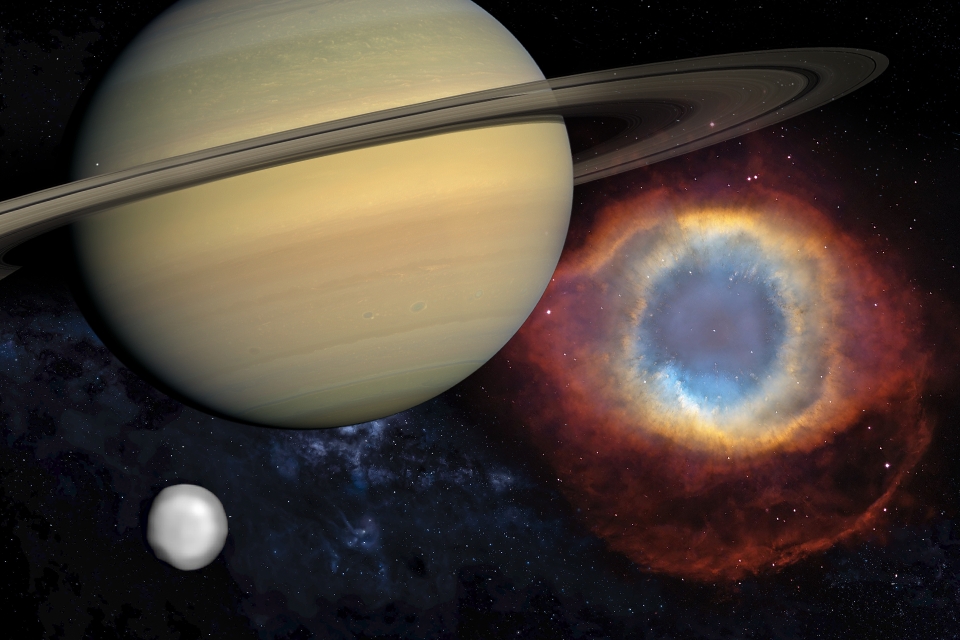The last summer month is famous primarily due to the annual Perseid meteor shower — the second most powerful in the sky of the Northern Hemisphere. This year, it also accounts for the period of invisibility of Venus, when, from the point of view of observers on Earth, it will be located near the Sun (it will appear again in the morning sky on August 18-19). Also, this month on its first and last days the full moon will come twice, which happens less often. On the 16th, the Moon will be situated the farthest from the Earth in 2023, and on the 27th, an interesting double opposition will take place: the planet Saturn and asteroid Flora will pass the culmination at midnight, and the apparent distance between them will slightly exceed 6°. In addition, the asteroid will be only 3° from the planetary nebula NGC 7293 “Helix”, which is best seen in August.

August 1
- Full moon
August 2
- The Moon is at perigee, 357310 km from the center of the Earth
August 3
- The Moon is 5° south of Saturn (0.6ᵐ)
August 5
- The Moon is 2° south of Neptune (7,8ᵐ)
August 8
- The Moon is in the last quarter phase
- The Moon is 3° north of Jupiter (-2.4ᵐ)
August 9
- The Moon is 2° north of Uranus (5,8ᵐ)
August 10
- Mercury is at its greatest eastern elongation (27°24’ from the Sun)
August 13
- Venus is in lower conjunction with the Sun
- Maximum activity of the Perseid meteor shower (up to 50 meteors per hour)
August 16
- New Moon
- The Moon is at apogee, farthest from Earth in 2023 (406,634 km)
August 18
- The Moon is 3° west of Mars (1.8ᵐ)
August 20
- Maximum activity of the Cygnid meteor shower (up to 15 meteors per hour)
August 21
- The Moon is 2° north of Spica (α Virgo, 1.0ᵐ)
August 24
- The Moon is in the phase of the first quarter
- The Moon is 4° west of Antares (α Scorpio, 1.0ᵐ)
August 27
- Saturn in opposition
- Asteroid Flora (8 Flora, 8.5ᵐ) in opposition
August 30
- The Moon is at perigee, 357180 km from the center of the Earth
- The Moon is 3° south of Saturn (0.4ᵐ)
August 31
- Full moon

